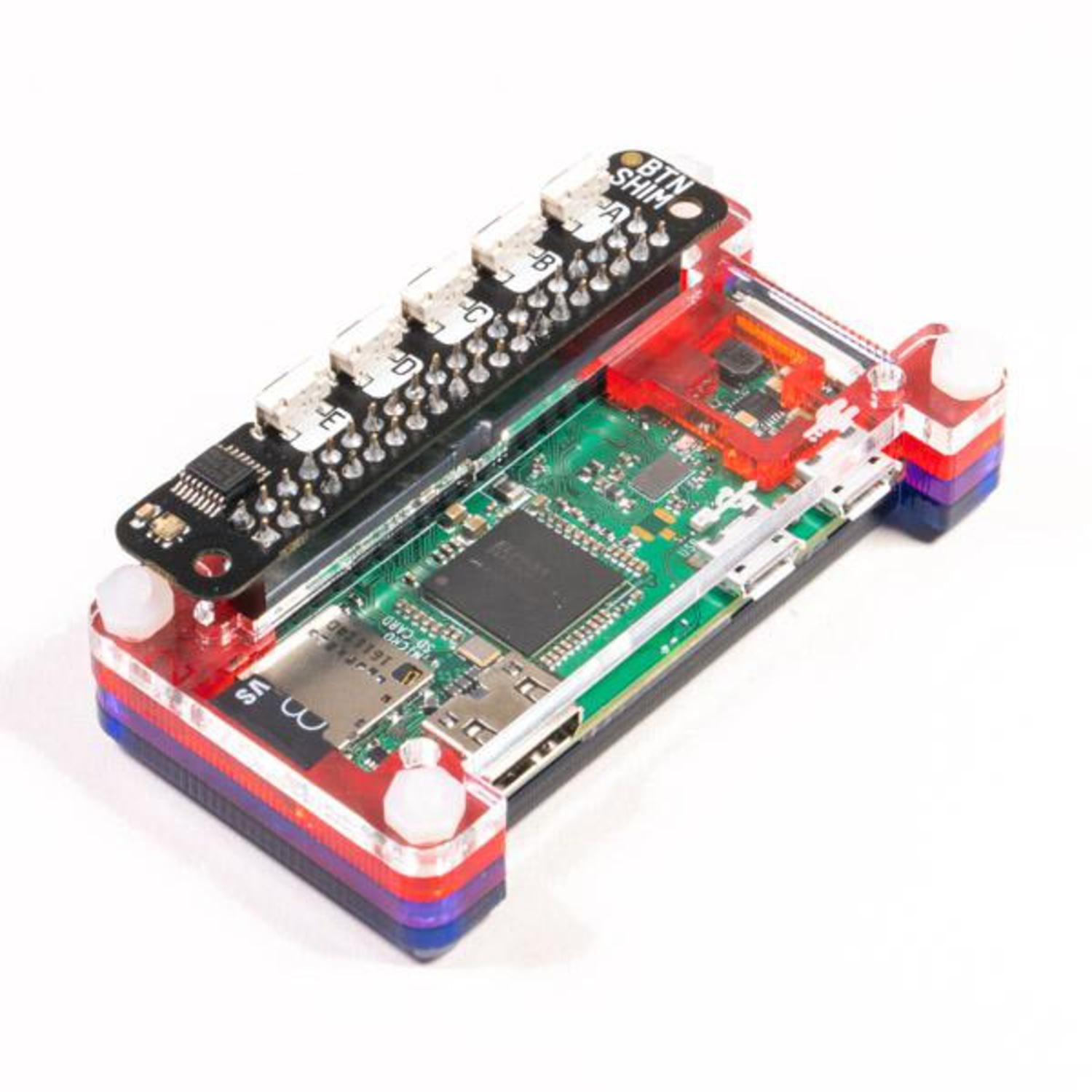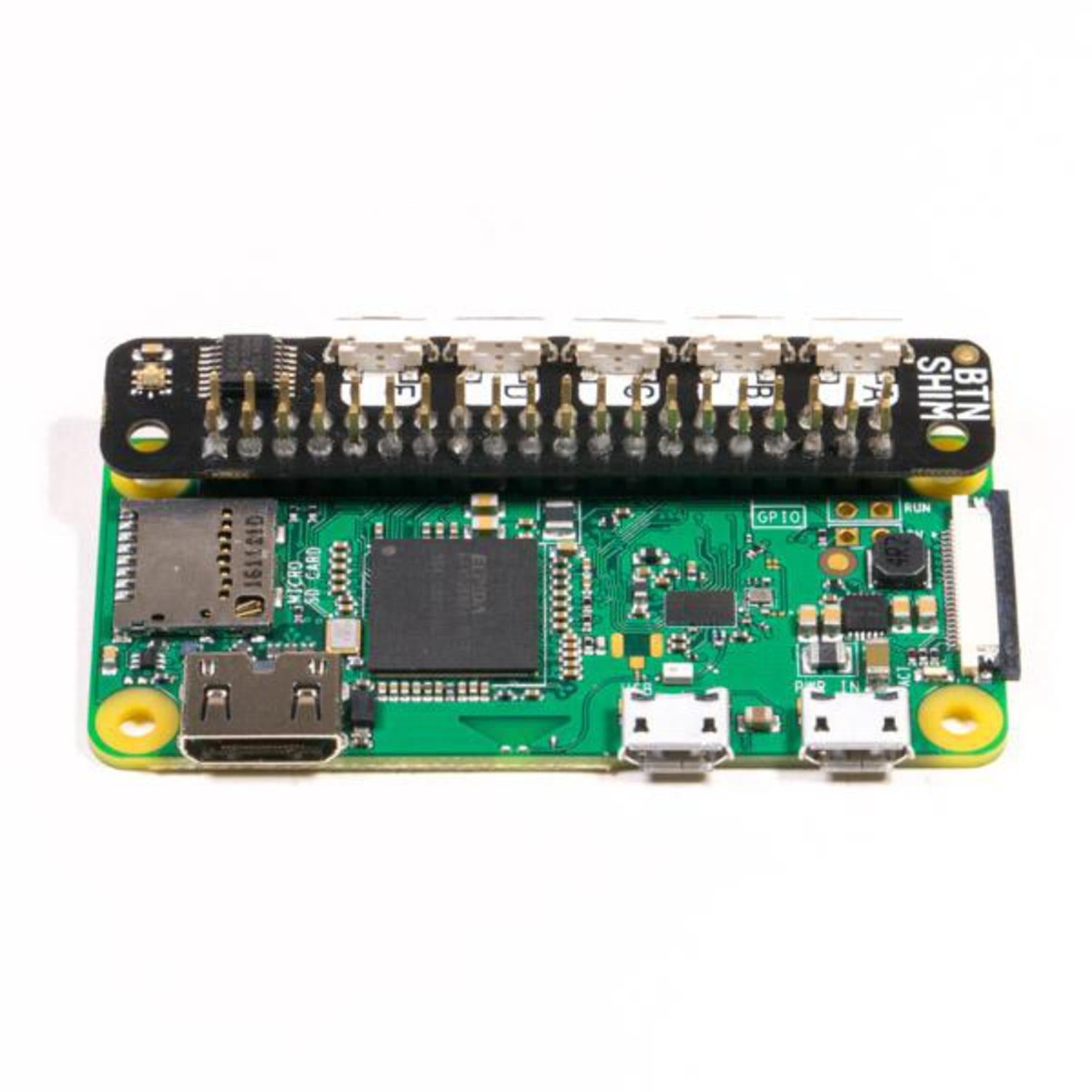Button SHIM is a fantastic addition to your Raspberry Pi projects. It comes with five useful physical buttons and an RGB status LED. This board is designed in the SHIM format, which can neatly fit onto your Pi's GPIO pins. You can still use HATs and pHATs simultaneously. Alternatively, solder the included female header and use it as a standalone board. The buttons and status LED are on the top edge of your Pi, making them easy to reach. Use Button SHIM to add physical interaction and visual feedback to your project. It's a perfect controller for LED boards like Unicorn pHAT, Mote, and Blinkt! You can also pair it with Four Letter pHAT to turn your Pi into an alarm clock or stopwatch/timer. Key features include 5 tactile right - angle push buttons, a single RGB LED (APA102), buttons driven by an IO expander (TCA9554A), a super - slim SHIM - format board with a 0.8mm thick PCB. It's compatible with Raspberry Pi 3, 2, B+, A+, Zero, and Zero W. A Python library is available, and a 2x20 female header is included. Note that soldering is required. Thanks to the IO expander, you can have full access to your Pi's pins as long as the I2C address (0x3f) doesn't conflict. Install the Button SHIM Python library easily with a one - line installer. Just open a terminal and type 'curl https://get.pimoroni.com/buttonshim | bash'. Our software doesn't support Raspbian Wheezy. Make sure to install Button SHIM with the buttons facing outwards and on the top. The board dimensions are 65x13x4.5mm (WxHxD, depth includes buttons), and the button dimensions are 7x3.5x3.75 (WxHxD).




Using Button SHIM is easy. First, decide whether you want to fit it onto your Pi's GPIO pins or use it as a standalone board by soldering the included female header. Remember, soldering is required. When installing, make sure the buttons face outwards from your Pi and are on the top. To install the software, open a terminal and type 'curl https://get.pimoroni.com/buttonshim | bash'. This will quickly install the Python library. You can then use the example programs to control your Pi's audio, the status LED, or mimic key presses. Be aware that our software does not support Raspbian Wheezy. For maintenance, keep the board clean and dry. Avoid exposing it to extreme temperatures or humidity. If you need to remove it, do it gently to avoid damaging the pins. When not in use, store it in a safe place to prevent any physical damage.